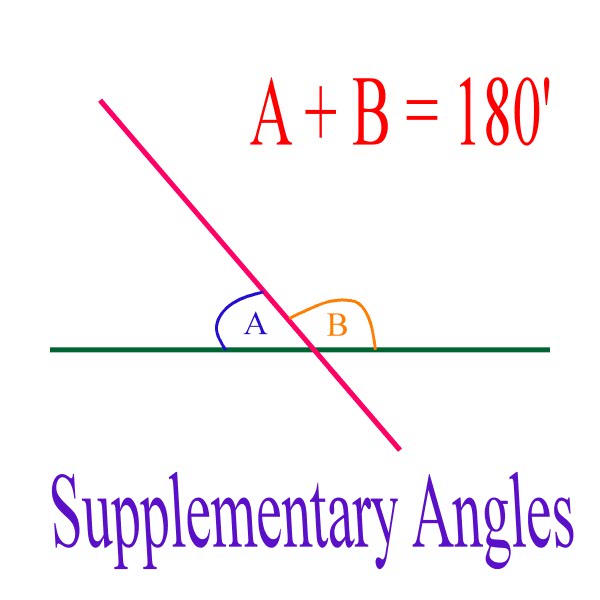

They have also learned basic geometry such as shapes and certain formulas before they came to 8th grade.ĭuring the Implementation of the Learning Experience:ĭuring the implementation of this learning experience students should start to learn their geometry vocabulary, which is extremely important to be successful in this unit. In the geometry unit the students will have to set up equations and solve for variables, which they previously have learned.
#SUPPLEMENTARY ANGLE GEOMETRY HOW TO#
They learned how to solve equations as well as learning how to check their answers to see if they are correct. Prior to this learning experience, the 8th grade students learned how to set up equalities and inequalities. When do you set an equation equal to 180°?.How could you illustrate adjacent angles?.What words come to mind when you think of geometry?.They will show their understanding through quizzes, tests, graded homework, and studying their index cards with their parents. If students do not understand the vocabulary words they will struggle in the geometry unit. The student should be able to apply these vocabulary problems to actual geometry problems where they will need to solve for variables. Students should be able to define any geometry word as well as know which each term looks like in an illustration. They will hopefully soon memorize and know the terms to the point of where they won’t need to refer to their index cards anymore. Using index cards for students to write the definition as well as the illustration will help them see visually what each term is as well as hear it when they are studying the cards.




 0 kommentar(er)
0 kommentar(er)
